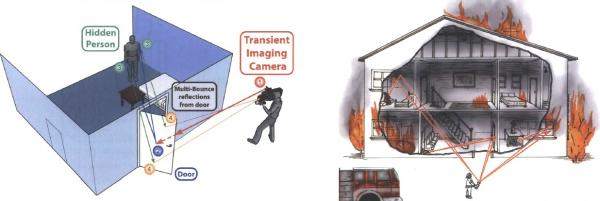MIT researchers have developed a camera capable of capturing images of objects that are not in its direct line of sight.
The camera uses a laser to reflect light off of objects, so the operator can see things hidden around corners or concealed under other items.
Like any good scientific breakthrough mathematics is a key step to making the device work. Algorithms take information from the reflected light to build an image of the hidden things the camera is able to see.
The camera was designed by MIT professor Ramesh Raskar and his associates. They call such a system a “femtosecond transient imaging system.” It utilizes the fact that light can be captured at very short time scales, like one quadrillionth of a second.
By constantly collecting light and computing the time and distance that each pixel travels, the camera makes a “3D time-image” of the scene.
“It’s like having x-ray vision without the x-rays,” Raskar said in a PhysOrg.comstory. “We’re going around the problem rather than going through it.”
The researchers are in the initial stages of developing the camera and are focused on precisely mapping more elaborate scenes. They believe the camera could have a multitude of applications.
For example it could be deployed for search and rescue missions to find survivors in a crumpled building or a burning building. It might also be used for stopping an automobile collision at a blind corner, for machine vision, and possibly investigating industrial objects with isolated surfaces.
It might also be useful in the medical field for biomedical imaging applications by giving doctors the ability to use endoscopes to view areas inside the human body that are normally hidden. The scientists also think that a portable camera system similar to an endoscope could be available in the next two years (freaking awesome).

Image credits: Ahmed Kirmani, MIT.






